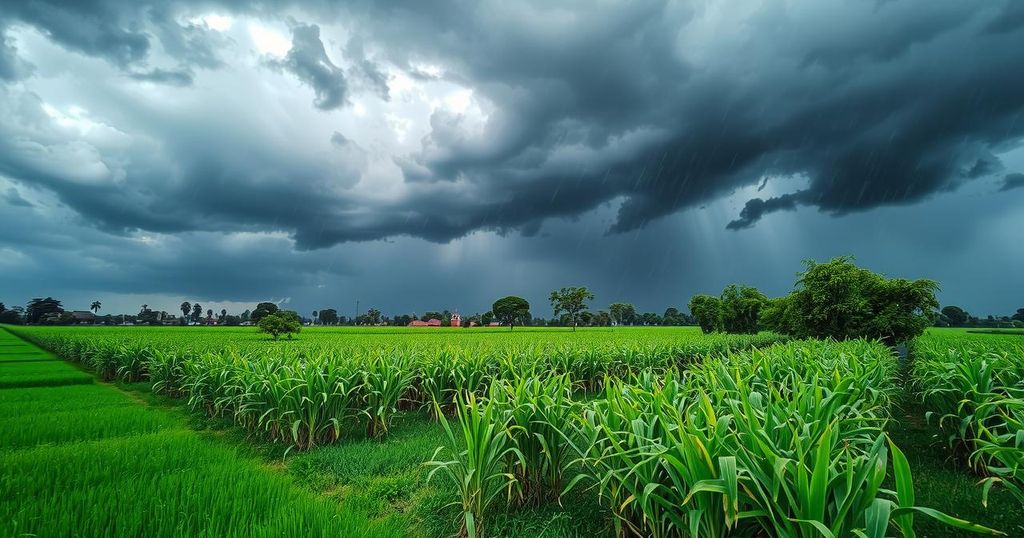Impact of Brazilian Weather and Currency on Sugar Prices

Sugar prices have fallen due to rain forecasts in Brazil and a weakening Brazilian real. Despite previous highs, production estimates have been revised downward, signaling a potential tightening market. The USDA forecasts increased global sugar production and consumption, introducing complexity to future pricing dynamics.
Sugar prices have recently experienced a decline, with May New York world sugar down by 0.79% and London ICE white sugar down by 0.35%. The drop has been attributed to forecasts of rain in Brazil, which alleviated concerns over dryness affecting sugar crops. Meteorologist Climatempo has projected widespread showers across Brazil’s sugar-growing regions into the following week.
Moreover, the Brazilian real has fallen to a two-week low, further contributing to reduced sugar prices. A weaker real encourages Brazilian producers to export more sugar, leading to increased supply in the global market. This week marked a significant shift, as both NY and London sugar previously reached one-month and four-month highs, respectively, due to lower global sugar production forecasts.
The Indian Sugar and Bio-energy Manufacturers Association has also revised its 2024/25 sugar production estimate down from a prior forecast, citing reduced cane yields. Concurrently, reports indicate that sugar output in Brazil’s Center-South region has declined by 5.3% year-on-year for the 2024/25 season, according to Unica. Sugar trader Czarnikow has adjusted its Brazil production estimate downward from 43.6 MMT to 42 MMT.
The International Sugar Organization (ISO) reported a significant shift in the global sugar market, raising its deficit forecast for 2024/25 to -4.88 MMT and lowering the global sugar production estimate. Conversely, some forecasts, such as those by consultant Datagro, suggest that Brazilian production may rise by 6% in 2025/26, which presents a contrasting outlook for the market.
India’s recent decision to allow sugar exports has contributed to a more bearish sentiment in the market. After imposing restrictions, the country is now permitting its mills to export 1 MMT of sugar this season, highlighting the changing dynamics in the Indian sugar economy, especially as production is expected to decline significantly.
Additionally, increases in sugar production estimates from Thailand, projected to rise by 18% year-on-year, may also exert pressure on global sugar prices. Fires and adverse weather conditions last year significantly impacted Brazil’s sugar crops, causing considerable losses, which have influenced recent revisions in production estimates by Conab.
The USDA’s forecasts indicate a potential rise in global sugar production for 2024/25, alongside an increase in consumption rates. This points to a tightening market despite the bearish indicators in the current reports, indicating a complex landscape for sugar pricing in the coming seasons.
In conclusion, the recent decline in sugar prices reflects a confluence of factors, including favorable weather forecasts in Brazil, currency fluctuations, and adjustments in production estimates from key producing countries. While some reports indicate potential increases in production, the overall sentiment remains cautious with a projected global sugar deficit. Stakeholders will need to navigate these complexities as market conditions evolve.
Original Source: www.tradingview.com






